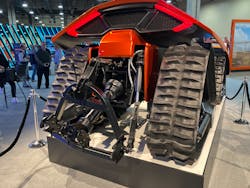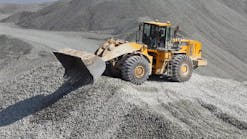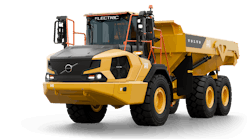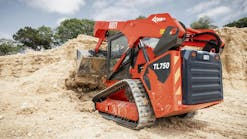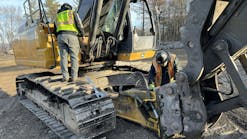Kubota executives outlined a three-phrase strategy toward digital transformation during its annual dealer meeting in Grapevine, Texas, this month. The company’s “view of the future,” according to Todd Stucke, SVP for marketing, product support, and strategic projects, will advance in three phases.
“We’re trying to make it as simple as your iPad,” Stucke said. “You can put technology in for technology’s sake, but if it’s difficult for the customer to use, it won’t get used and you won’t get the value out of it.
“What made Kubota for the past 50 years was ‘simple’; simply reliable. We’re going to apply the same strategy to our next phase.”
Each phase of transformation builds on the others, with the ultimate goal of creating “stackable” technology that adds value to the end product. The three-phase strategy extends to all product groups—construction equipment, agriculture, and lawn care—and is proceeding simultaneously.
“We are working on all three phases at the same time,” Stucke said. “The learning is what’s key. We have to learn what works and what doesn’t work.”
Kubota is applying the process to electrification of equipment, and Stucke explained the three phases of that transformation.
Kubota’s three phases of electrification
Phase 1, he says, is simply swapping an electric battery for the diesel engine. Phase 2 builds on Phase 1, he said.
“You take the engine out; you drop in a battery with an electric motor," Stucke said. "You switch out all your drives and put electric drives on it. You run it with software.
“A mechanical tractor is driven by hydraulics. Phase 2 is 100 percent electric. Now you start adding value. It’s quiet; there’s no noise. With mowers, belts wear out. There are no belts. And you have software so you can ‘drive by wire’ completely. It’s controlled completely electronically.”
Phase 3 is purpose-built equipment, Stucke said, using a concept tractor to illustrate.
“Phase 3 is…when you start stacking the technologies,” he said. “If it’s battery operated, if it has all the software of Phase 2, then you can stack on top of it. [You can add] autonomy, you can hook it to the cloud, you can interface it with all your other management systems. [This adds] tremendous value. Because if it’s autonomous, you don’t need a cab.”
Although Kubota showed the concept tractor, a fully electric mower, and a battery-powered mini excavator to its dealers, Stucke emphasized that the process is geared toward adding the most value as quickly as possible, regardless of product segment. The company has created a team in North America to study every market segment to determine where that value exists.
“What happens if we make a turf mower autonomous?" he said. "I don’t have to mow my yard, but what happens if…one of the kids leaves a ball and a bat out there? Not only do you have to have the hook to the cloud, you have to have visual to watch what’s going on so you can go around [it].”
Kubota technology applied to construction
On the construction side, Stucke said there may be great value in machine control as a tool to alleviate the shortage of skilled labor.
“How do we make every operator your best operator?” he said. "That’s machine control. When you have an inefficient operator, they waste. They waste time, they waste fuel, they waste carbon. If you can make it efficient, you’ve cut that waste. It’s through the technology and systems.
“It has to be simply reliable,” he said. “If you’re going to make every operator your best operator, it’s got to be simple. You have to just hit a button and dig.”
